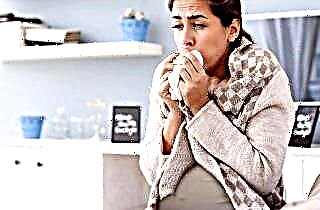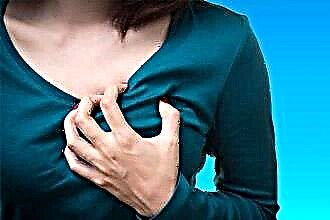Cough does not always heal quickly. If you miss the moment of the onset of the disease, especially caused by pathogenic microorganisms, the infection penetrates deep inside and it becomes more difficult to cope with it every day. Deep warming helps a lot in this. One way to do this at home is with a cough lozenge.
How lozenge helps
 The main purpose of the lozenge is to warm up the inflamed bronchi, due to which they expand, relieve spasms, facilitate breathing and coughing up phlegm. If the cake is made correctly, then it may well replace traditional mustard plasters with the only difference that too strong a burning sensation is not felt on the skin. That is why cough lozenges are often used to treat children.
The main purpose of the lozenge is to warm up the inflamed bronchi, due to which they expand, relieve spasms, facilitate breathing and coughing up phlegm. If the cake is made correctly, then it may well replace traditional mustard plasters with the only difference that too strong a burning sensation is not felt on the skin. That is why cough lozenges are often used to treat children.
There are many indications for its use:
- acute respiratory diseases of an infectious and non-infectious nature;
- acute and chronic bronchitis;
- bronchial asthma;
- chronic pneumonia.
Cough lozenges help in almost all cases of dry, unproductive coughs. An exception is an allergic cough, which can be eliminated quickly only with the help of antihistamines.
Application rules
 As simple as the use of the lozenge may look, there are certain secrets that will make home treatment more effective:
As simple as the use of the lozenge may look, there are certain secrets that will make home treatment more effective:
- It is necessary to prepare the cake immediately before use - this will allow you to preserve the maximum of useful substances in it.
- The skin must be pre-lubricated with a fat nourishing cream or melted butter - this will protect it from burns and prevent the cake from sticking to the body.
- The maximum heating effect is achieved if two lozenges are placed simultaneously: one on the chest in the bronchial region, and the other on the back, in the lungs.
- After the cake is installed in the right place, it is covered with cellophane and on top is additionally insulated with a folded terry towel or scarf.
- You need to lie with a cake under a warm blanket, but adjust the temperature so as not to sweat.
- The duration of the procedure is at least 2-3 hours, but you cannot leave the cakes overnight. Therefore, if you do the procedure in the evening and are in doubt that you will not fall asleep, set the alarm.
- After removing the cakes, wipe the skin with a cloth or sponge soaked in warm water, wipe dry. A soothing cream can be applied if the recipe included mustard, ginger, or cinnamon.
Since the procedure has a strong warming effect, it cannot be performed at an elevated body temperature (from 37.2 0WITH). It is also impossible to put cakes every day - they create an additional burden on the heart. The best option is treatment every other day. The duration of the course is up to 5-7 procedures.
The best recipes
 There are a lot of recipes on how to make a cough cake. It is difficult to say in advance which one is right for you. It is better to experiment a little and choose the option that suits you. Tortillas that contain mustard, cinnamon or ginger have a greater warming effect than honey alone. But they are not suitable for the smallest children - they can burn delicate skin or cause severe irritation.
There are a lot of recipes on how to make a cough cake. It is difficult to say in advance which one is right for you. It is better to experiment a little and choose the option that suits you. Tortillas that contain mustard, cinnamon or ginger have a greater warming effect than honey alone. But they are not suitable for the smallest children - they can burn delicate skin or cause severe irritation.
Regardless of the method of preparation, the cake must be laid out on a fabric base - a cotton napkin or gauze folded in several layers before placing it on the body. This will keep it from losing its shape and will make it easier to remove after the procedure is completed.
Here are some of the most effective recipes:
- Traditional honey. It is made from liquid honey and ordinary wheat flour (no water added!). Take two tablespoons of honey, mix it with enough flour to make a soft dough.
- Honey with vodka. The preparation method is the same as described above, but two tablespoons of vodka or alcoholic herbal tincture (sage, thyme, calendula, etc.) are added to the cake.
- Mustard. It warms even more than traditional mustard plasters, so you need to keep them for only 20-30 minutes so that there is no burn on the skin. To prepare it, you need dry mustard powder, which will be used instead of flour. The honey is mixed with mustard powder to form a cake. If it is being prepared for a child, you can add another tablespoon of vegetable oil to soften the effect.
- Cinnamon. Cinnamon perfectly improves blood circulation and relieves bronchial spasms. A cinnamon tortilla requires a teaspoon of ground cinnamon, two tablespoons of honey, and plain flour. First, mix honey with cinnamon, and then add the required amount of flour.
 Salty. It has long been believed that salt "draws" the disease out of a person. Whether it is true or not, one cannot say for sure, but, nevertheless, a cake made of salt is excellent for chronic bronchitis and even pneumonia. This recipe uses coarse rock salt instead of flour. Two tablespoons of honey are mixed with salt and a teaspoon of olive oil or ghee.
Salty. It has long been believed that salt "draws" the disease out of a person. Whether it is true or not, one cannot say for sure, but, nevertheless, a cake made of salt is excellent for chronic bronchitis and even pneumonia. This recipe uses coarse rock salt instead of flour. Two tablespoons of honey are mixed with salt and a teaspoon of olive oil or ghee.- Potato. Good for those who are allergic to honey. It is absent in this recipe at all. 3-4 medium potatoes should be boiled with the skin, then peeled and mashed. Add a tablespoon of vegetable oil and the required amount of flour to it. It is advisable to apply it while it is warm.
- Potato with honey and mustard. A tougher option is a mashed potato pancake, to which mustard powder and one tablespoon of honey are then added instead of flour. After several applications, it can relieve even a very strong cough. It is enough to keep such a cake for no longer than 30-40 minutes, and then be sure to lubricate the skin with a soothing cream.
- Ginger. Ginger has excellent anti-inflammatory and antibacterial properties, improves blood circulation, and boosts immunity. Peel a small piece of root and grate. Collect the gruel in cheesecloth and squeeze out the juice. Add a tablespoon of honey, flour and knead the dough.
 Many other recipes can be found on the Internet. Each of them is good in its own way. The main thing is to understand that after all, this is not the main treatment, but additional therapy, which must necessarily be combined with traditional medicines or the internal intake of decoctions of herbs and other folk remedies for coughs.
Many other recipes can be found on the Internet. Each of them is good in its own way. The main thing is to understand that after all, this is not the main treatment, but additional therapy, which must necessarily be combined with traditional medicines or the internal intake of decoctions of herbs and other folk remedies for coughs.
If after several procedures there is no noticeable improvement, the cough increases or the body temperature rises, then it is necessary to consult a doctor. Perhaps this treatment was not enough and antibacterial pharmaceutical drugs are needed.
If you start the disease, it can become chronic or cause serious complications.
It is impossible to use cough lozenges without the consent of the doctor even if the prescribed course of treatment already includes physiotherapy procedures that are performed in the clinic: electrophoresis, UHF, ultrasound and others. These procedures also stimulate blood circulation and the immune system, and too intense exposure to a weakened body can cause a reverse reaction.
Contraindications
 The main contraindications to the use of the lozenge are increased body temperature and individual intolerance to its individual components. But since there are many different recipes for its preparation, almost everyone can choose the right ingredients for themselves.
The main contraindications to the use of the lozenge are increased body temperature and individual intolerance to its individual components. But since there are many different recipes for its preparation, almost everyone can choose the right ingredients for themselves.
Even pregnant women and babies can be treated in this way. But if honey is included in the recipe, then the baby must be checked for an allergic reaction before the first use.After all, honey is one of the strongest natural allergens. To do this, grease a small area of skin (1x1 cm) on the baby's handle with honey and leave it for 2 hours. If there is no redness and other allergic manifestations, treatment can be started.

 Salty. It has long been believed that salt "draws" the disease out of a person. Whether it is true or not, one cannot say for sure, but, nevertheless, a cake made of salt is excellent for chronic bronchitis and even pneumonia. This recipe uses coarse rock salt instead of flour. Two tablespoons of honey are mixed with salt and a teaspoon of olive oil or ghee.
Salty. It has long been believed that salt "draws" the disease out of a person. Whether it is true or not, one cannot say for sure, but, nevertheless, a cake made of salt is excellent for chronic bronchitis and even pneumonia. This recipe uses coarse rock salt instead of flour. Two tablespoons of honey are mixed with salt and a teaspoon of olive oil or ghee.

